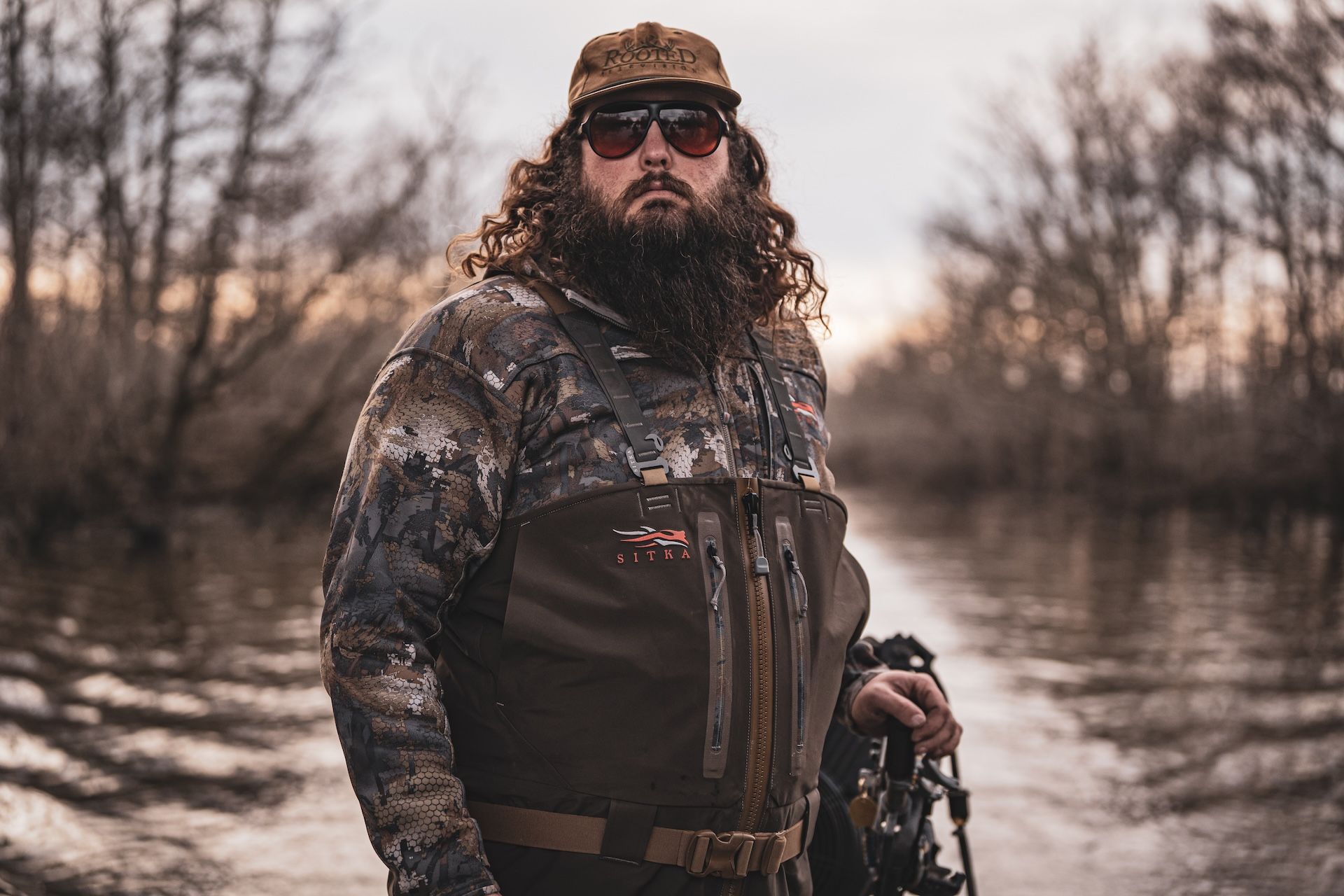Field Guide / Waterfowl
11 Pro Waterfowl Hunting Tips with Ben Cole of RootedTV
Learning from the best is one of the best ways to become a better hunter. So, we've brought you the best tips for waterfowl hunting from our friend Ben Cole of RootedTV.
Keep reading for his best waterfowl hunting tips (starting with "the" most important tip of all) and learn how to bring home more birds this season with his insights.
Ben covers:
- Scouting
- Paying Attention to the Wind
- Decoy Spreads
- Decoys Must Look Real
- Being Set Up Early
- Safety
- Concealment
- Having a Gun that Works
- What to Know About Waders
- Dressing in Layers
- Duck Calls
He also talks about how HuntWise is a game changer for bringing home more birds.
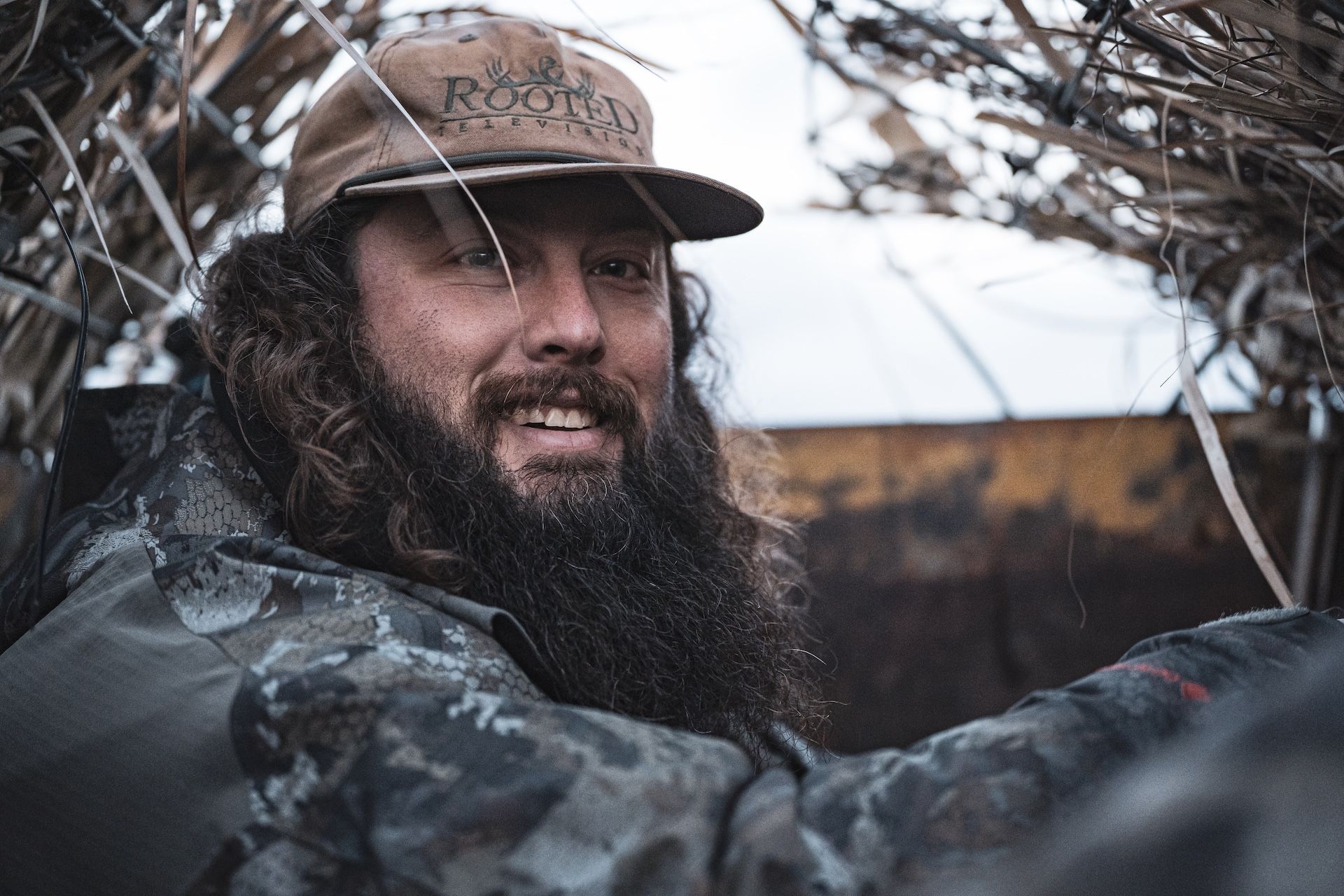
1. Scouting is the Key
When I first started duck hunting, I was hunting public land in Alabama. My dad would always take us. My brother and I would walk in. We didn't even have a boat.
We had one little bag of decoys, and that was it. But, I learned that scouting is the key to your success in waterfowl. That is the number one thing that you have to pay attention to. If you don't know where the "x" is (and by the x, I mean that is where the birds want to be, and your best duck hunting spots), you won't be where the birds are.
That is the most important aspect of waterfowl hunting. You can be close. You can, you know, be one field over, or 100 yards away from where they want to be. But to really have the best success, you need to be exactly where they want to be.
What's the Best Way to Scout?
It's not to drive in there and flush them out.
Instead, sit back with binoculars and watch from 200-300 yards away. Coordinate what you see with the HuntWise app, mark pins on the map where birds are sitting, and adjust your strategy based on exactly where they're sitting.
2. Pay Attention to the Wind
Ducks land into the wind. You always want the wind (ideally) to be at your back. You can also be very successful with a crosswind in front of you.
Wind impacts how you set up your decoy spread. So, one thing I do, as far as wind goes, is use the WindCast feature in the HuntWise app. I can visually see which way the wind is going, then set my blinds up and adjust accordingly.
Remember: ducks can’t smell, but by golly, they can see. They are looking for everything. When setting up your blind and decoys, make it so that they land right in front of you. Make it easy for them.
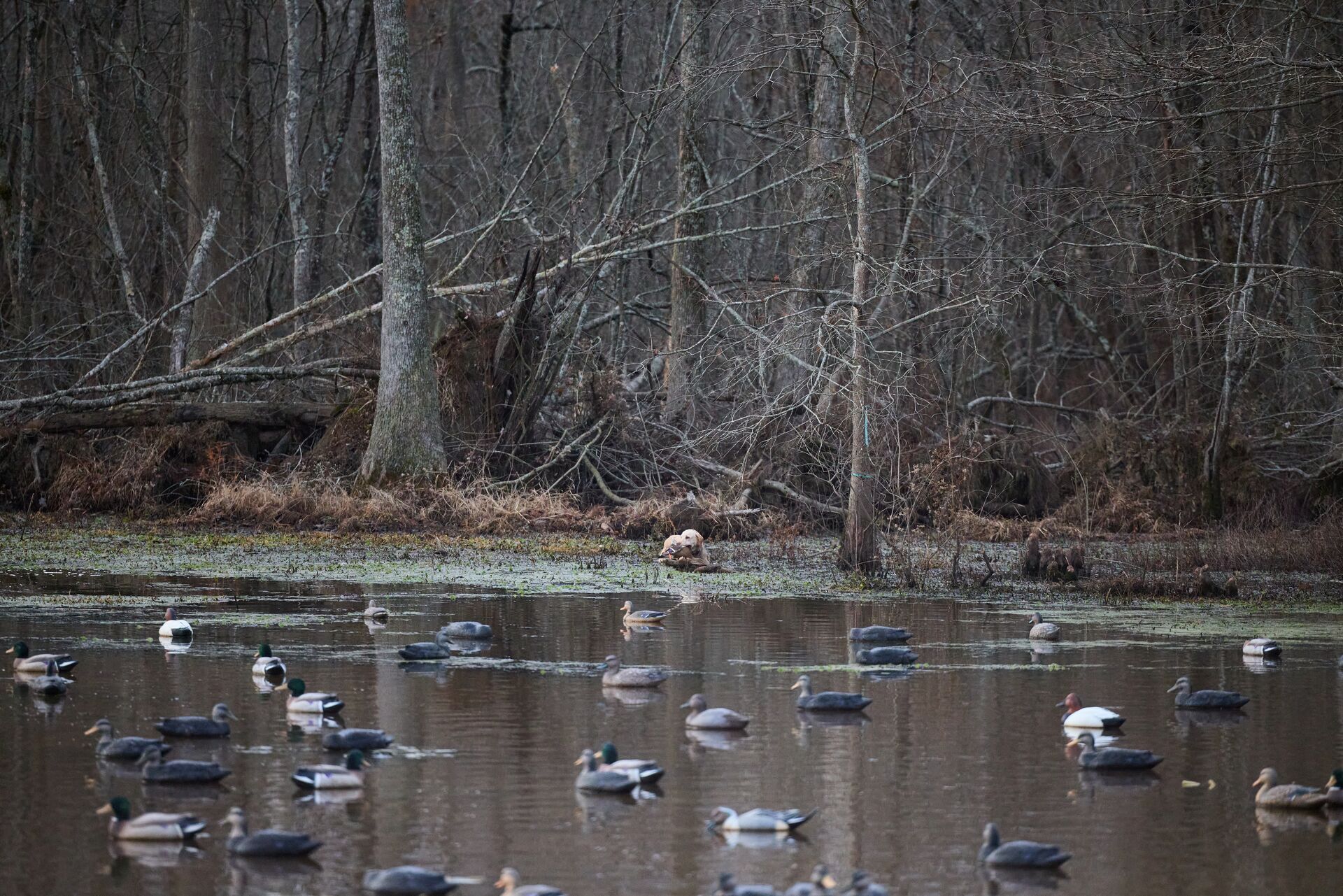
3. Decoy Spreads Should Vary
I've hunted everywhere from Canada down to South Florida. Decoy spreads are different everywhere you hunt for all different types of ducks.
Decoy shapes and the number of decoys you use will change throughout the season. At the beginning of the season, I don't like to use a whole lot of decoys. Those birds are not quite as shy yet because they don't have as much pressure on them.
Remember that these birds have traveled and have seen every decoy configuration from Canada all the way down to where you are, so the key is to make it as realistic as possible. Start with a "U" shape, like a horseshoe, where the bend of the "U" is where the blind is. Then backfill on each side.
Spinning wings work (Mojos) work, but sometimes they don’t. So be careful with those. I've found that motion decoys in the water, making ripples and looking like a bird feeding, work better than a Mojo.
Decoys for Puddle Ducks
When hunting puddle ducks in shallow water, the horseshoe decoy setup is wonderful. You've gotta adjust for the wind, like a crosswind. In that case, the widest part where you backfill is out in front of the blind.
That's why the HuntWise app is so crucial. I can look at WindCast in the app beforehand, like the night before, and know the wind conditions ahead of time, so I know what I'm going to do going into it. And it's pretty dang accurate.
Knowing what the wind is ahead of time has been one of the most useful tools for me, so that I can plan accordingly.
In the old school days, when I was a kid, we'd just hold leaves up in the air to see which way the wind was blowing. HuntWise and WindCast are better for wind predictions.
Decoys for Divers
Diver ducks are a whole different show. Puddle ducks are typically in shallow water, but divers go a whole lot deeper.
These are different duck species (like your canvasback, redhead, blue bill, greater scaup, lesser scaup, and the ringneck). These birds have different feeding patterns.
So, what you're looking for when you're out scouting and you find some birds through your binoculars, is why are they sitting right there (in that specific spot). I drop a pin in the HuntWise app and use the maps to see what's there. They're feeding (for example) right there.
With divers, you're typically not hunting out of fixed blinds. We hunt them out of boats using cane blinds cut from a nearby patch to conceal. Lay it crossways on the boat and leave holes for us to sit in and stick our shotguns out.
The decoy setup is starkly different than puddlers. Divers sit in lines on the water. So, use a long, straight line of decoys with an anchor on one end, repeat it over and over. You can also use a mat (like the material you have on a trampoline) and hook decoys to it. The mat can take up a lot of space in the boat, tho.
Again, your decoy setup will depend on the wind. But the coolest thing about divers is that they sound like fighter jets when they swing over you. You know, without a shadow of a doubt, when they're coming over you. It's so cool.
Ben's Bonus Diver Duck Tips
Some people don't know this, but you can actually call a diver. They growl. You can take a mallard call and growl into it, and a lot of times they'll turn to it. When they turn, it's time to shoot.
Be very cautious with divers. Bag limits are lower than puddle ducks. Review the regulations and do not shoot over the limits. Don’t damage the population.
Divers are fun. They're so much fun.
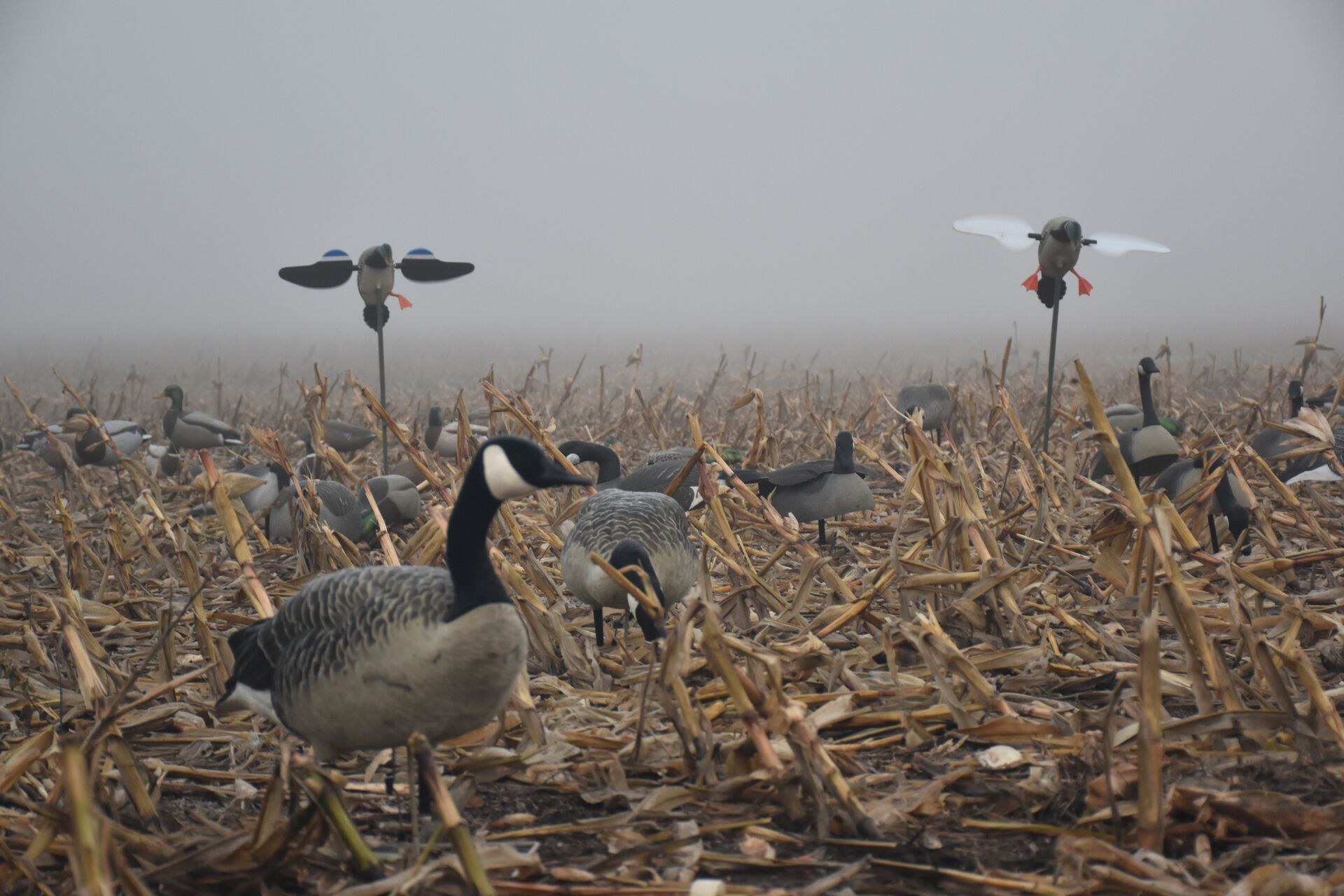
4. Decoys Must Look Real
I like the cheapest decoys possible. The reason why is because people shoot them, and I hate replacing expensive decoys with pellet holes in them.
That being said, I also like the higher-end decoys that look really nice and last a long time. I will say, the more you spend on a decoy, the longer it will last. The cheaper ones make it about a quarter of the way through a season before the paint starts chipping off. Then you have to repaint them, and that costs more money.
Whereas the more expensive ones look just as nice as the day I bought them.
Make sure your decoys are color correct. The paint job should look like a real duck. Our ancestors used milk crates and milk jugs, and that worked back in the day. But this is a different time. Ducks have seen decoys and spreads from Canada all the way here. They’ve seen it all.
A decoy looking like a real duck on the water gives you a competitive advantage. When choosing decoys and movement, get what makes the water move like ducks. Ducks are not motionless (they move all the time). Strategically place decoys that move throughout your spread and make sure they look lifelike.
Ben's Pro Tip: Don’t be discouraged if you can’t buy the most expensive decoys. Get what you can, then just get out there and learn.
Ben's Redneck Hack: If you don't buy foam-filled decoys, use contractor foam to fill decoys. Drill a little hole underneath the tail, then fill the decoy with foam. If someone shoots it, now it won't sink.
5. Be Set Up and Ready Early
You can’t shoot if someone is out setting up decoys (that's not safe), and you want to beat the birds there.
So, be early. You'll need to know how long the drive is, how many decoys you're bringing, and how long it will take you to brush your blind in to be 100% concealed, so you can factor in timeframes and be ready and set up early.
Figure that out the night before, so you've got what you need and how long it takes to get there.
6. Be Safe
When you're out hunting, it's life or death sometimes. If someone swings the wrong way, that can be it.
You have to know 100% what your target is and what’s behind it. With that, there's this rule that I go by, and it's to stay in front of you. Shoot the birds in front of you. Don’t swing left or right (you can swing just a little bit, but not a whole lot).
I call it the "10 & 2." Like on a clock, don't swing past 10 and 2. That'll keep everybody safe.
We also want to be safe out there in the water. Always wear a lifejacket out on the boat. Always make sure you have throwables (in case someone falls in) and fire extinguishers and everything your state requires for safe and legal boating.
The goal is to go home happy, healthy, and with a full strap of ducks.
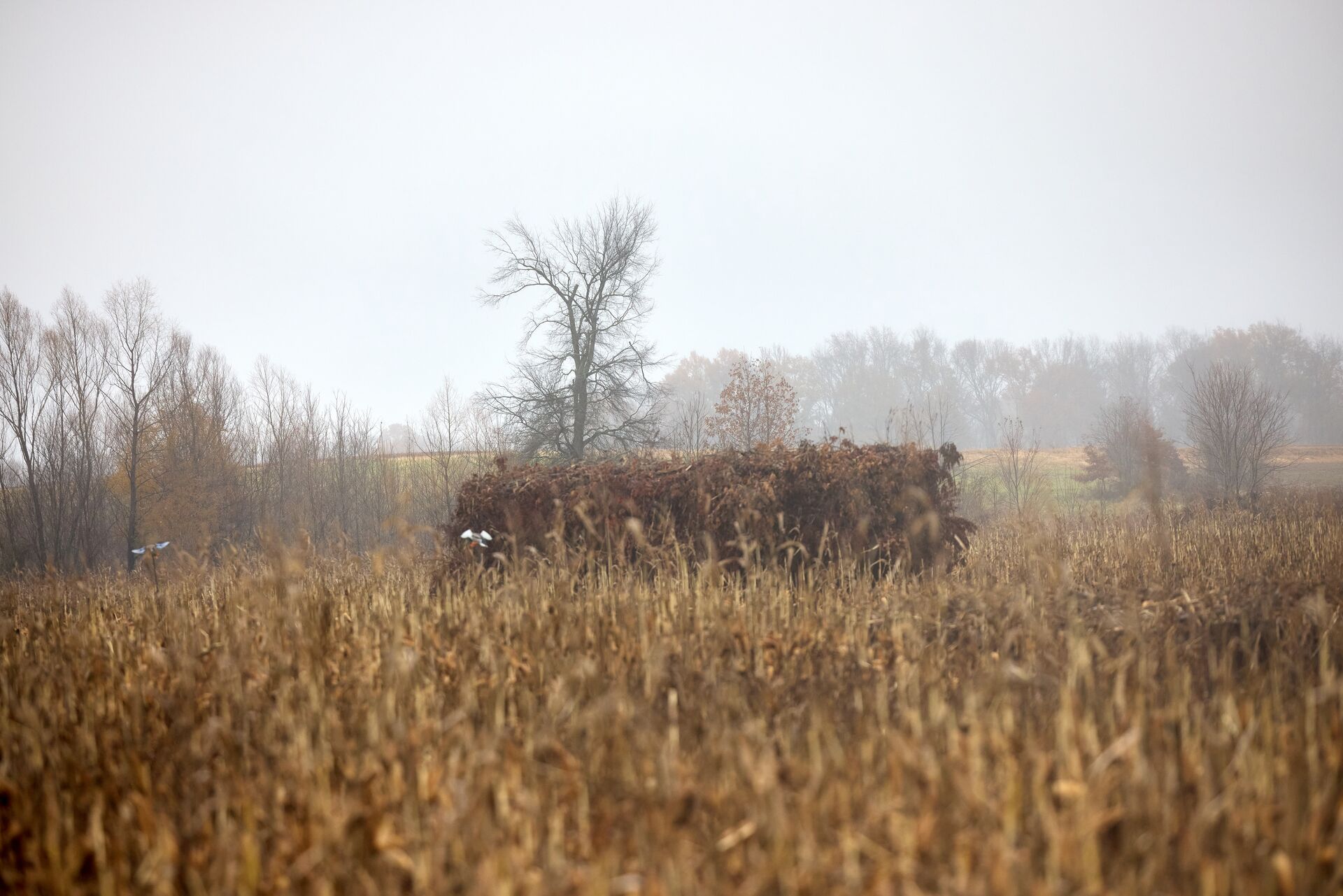
7. Be Thoroughly Concealed
Blend in with wherever you are. No matter where the birds are, you've gotta hide from them.
Good concealment can be a lot of work (I tend to go a little overboard) or not much work if you have what you need nearby to conceal well. But, other than scouting, your hide is crucial. It's the next most important thing when hunting waterfowl.
Permanent Blinds
Brush them in before the season starts, and use what's around the blind for cover. You don't have to cut the brush from there, but make sure you cut and bring in what matches the trees or brush in that spot.
Then, the best way to brush a blind is to use zip ties. You can't use too many. I'll use three packs or more on a duck blind. I want the cover to be so thick it looks like an overgrown patch of saplings. It should be so dense that you can't tell there's a blind in there.
No hard corners. Just let the limbs stick out further than the blind. With a stationary blind, I would also consider building a roof since the birds can see you from above. If they see you in there moving around, they will know something is up.
If it looks like a big pile of brush, it should work.
Add cross braces (covered with brush) to help control how far people swing their firearms when shooting.
A-Frame Blinds
Brush based on where you are. I might have a baseline of brush, but when I get there, I have electric hedge trimmers with me to cut brush nearby. I'll see what's there, then walk down a bit and clear out the brush with the trimmer to cover the blind — front, back, and sides.
An electric trimmer is inexpensive and saves time over using a machete or knife. It will cut your time in half.
Then, with an A-frame, you can move when the wind changes. You're mobile and versatile.
Remember: There's no roof, but the blind has a hole to stand up and shoot. Just cut some longer brush to cover it by laying the brush in an "X" shape over the blind. Again, no hard corners (there are no hard corners or squares in nature).
No Zip Ties Needed
A great thing about these blinds is that you won't have to use zip ties to attach the brush. These blinds have built-in brush ties. There should be so much brush attached to it that you have to push the brush out of the way to come out and shoot.
Again, I tend to go overboard with brush. But when you're out there and birds can't see you, you increase your odds of taking them down tenfold.
Layout Blinds
These are easy to brush because you’re on the ground.
Again, look for native foliage. Place the blind in taller grass for a natural cover on the hard edges of the blind.
Then, everyone gets in their blind. I look down the line of blinds with my headlamp to find holes and hard corners. I find those spots and make it look like a smooth piece of grass or foliage going down the levee. You can also pile brush between multiple blinds.
I love layout blinds. They conceal quickly, so you're spending less time on that to get set up. It doesn't take as much time or brush to brush them in.
Don't Forget Your Face
The last thing I'm particular about regarding concealment is your face sticking out of the blind where ducks can see you looking at them.
Paint your face or put a facemask on so ducks can't see your bright, shiny face. Hiding yourself is a big part of hide strategy.
Ben's Pro Tip: Use a wine cork and a lighter to paint your face. It's easy to use and easy to remove later.
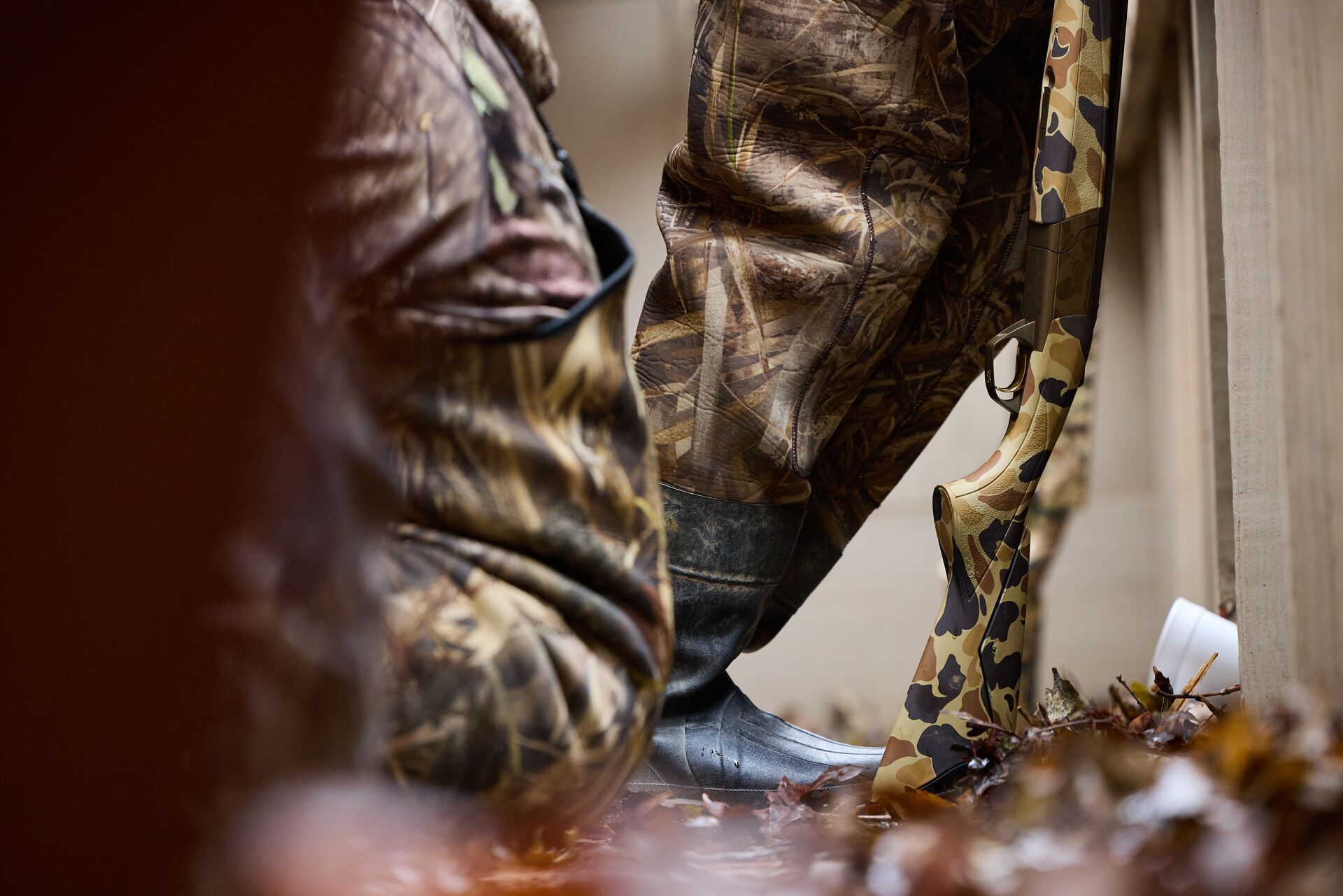
8. Have a Gun That Works in Any Environment
That means you need a gun with you that works in the cold if you're on a cold-weather duck hunt. Or, one you know will work in the heat or if it gets wet. You don't want to get stuck out in the water or in the blind, and your gun doesn't fire because it's too cold.
I usually bring an extra shotgun just in case the first one I use fails.
Make Sure Your Gun Fits You
Also, make sure you bring a shotgun that fits you. No matter what brand you love, there’s a brand that fits you perfectly without doing anything to it (right out of the box). My old pump gun was perfect for me right out of the box. You'll know that it feels right when you pick it up and shoulder it.
Your shotgun should be an extension of your arm. It should be easy to acquire a target. When you put the bead where you want it, you should be able to pull the trigger and know it's dead straight.
Shotgun Calibers
I like to shoot a 12-gauge, but it depends on the scenario. I really love shooting a 20-gauge (it's more of a challenge). I've even shot a 410. You want to talk about a challenge? Now that is a challenge.
But, my choice of weapon is typically my 20-gauge. It's lighter, the shells are smaller, there's less to pack, it's more cost-effective, and less likely to blow the birds to smithereens. It's just easier to get in and out of places, especially when you're limited to one box of shells on public land.
Choke Tubes
Try them all when patterning. The one you use on a hunt can change depending on the environment.
There are four types of chokes:
- Improve cylinder: A pretty wide pattern (more open)
- Modified: Tighter pattern
- Full: An even tighter pattern
- Extra Full (Long-range): Extremely tight (like a turkey choke)
It's important to know what choke to use in specific environments. For example, an extra full choke shot in timber is like shooting laser beams. If a bird moves one way or another at 5-10 feet, you'll miss before they fly away (and we don't want ducks to fly away). If they're going to finish, we want to bring them home with us.
When shooting in timber, you want an improved or modified choke. Modified will work in any environment. That's what I rock in most situations. You'll have better self-control to force yourself to finish the duck.
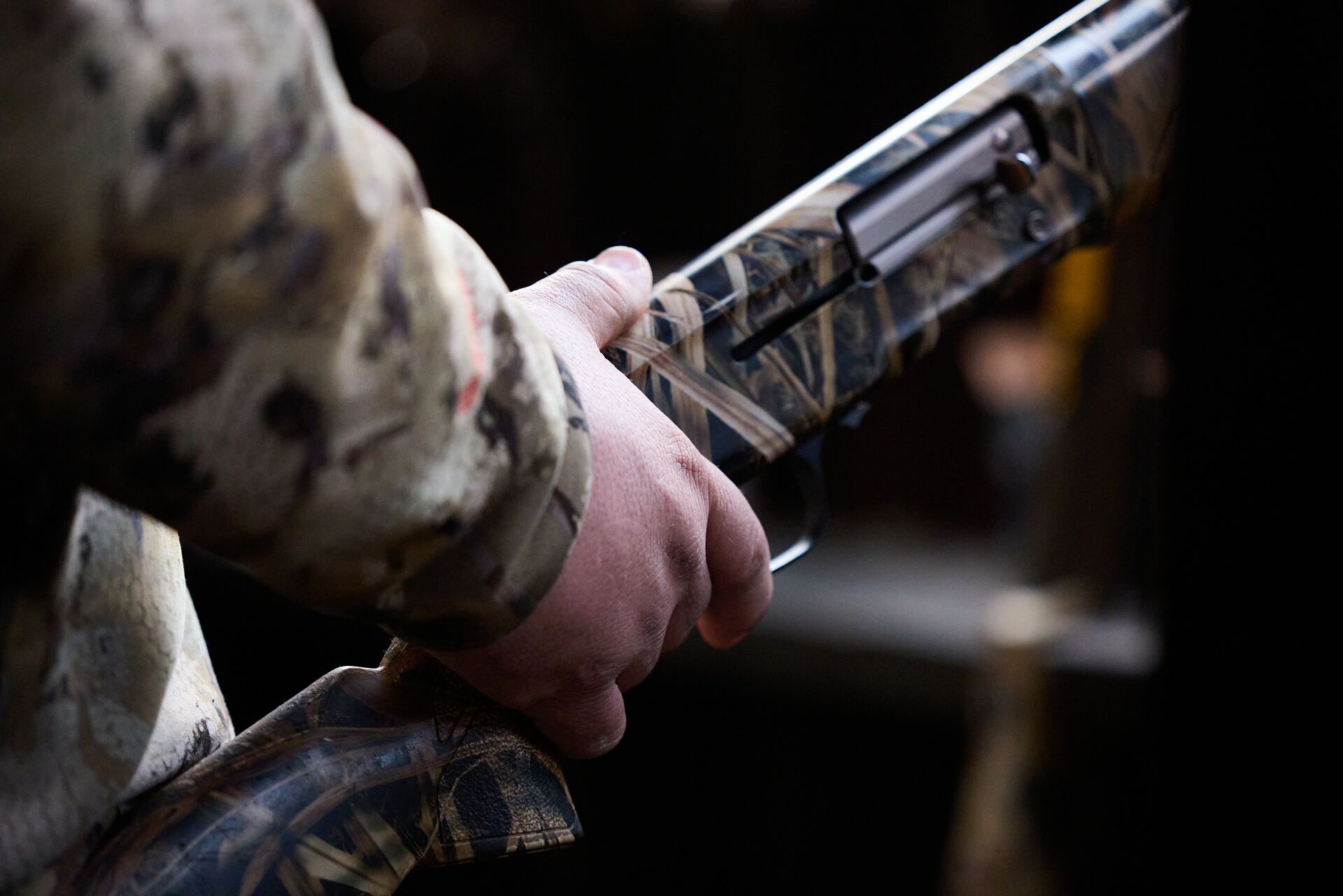
What about Ammunition?
There are a thousand different ammo options for hunting ducks. Let's break them down.
- Tungsten: I'm a fan of tungsten. It's more dense than lead and non-toxic. It hits harder and is less likely to just cripple a bird. However, it is expensive. Lots of companies make these shells. Try them to see how you like them. You'll get 10 (or fewer) in a box or less, so make sure you shoot straight.
- Bismuth: A great round, but not as good as tungsten (in my opinion).
- Steel: Bigger, slower, and likely to blow through a bird. I see more crippled birds using steel shot. But it's less expensive. You'll get 25 in a box, but you must be more accurate to avoid crippling.
- Hybrid (Tungsten and Steel): You'll get 25 shells in a box, and you get the tungsten in with the steel shot. Again, it's more expensive.
My favorite shot that I've used for years is the Federal in the blue box. It's cost-effective and fires well out of all of my shotguns.
You Must Pattern Your Shotgun
Some shells do not mix with some shotguns. Some will shoot better with different rounds.
You must know 100% how the ammo and firearm operate together before you hunt. Patterning your shotgun is the way to learn this. It helps you know exactly what your gun is doing and helps you determine how close you need the ducks to be before taking the shot.
I love finished ducks (feet down in the decoys) before I shoot. Nice and close. I don't worry about shooting at 40 yards. I want to shoot at 10 or 15 yards. At that point, you’ve won. You’ve beaten nature at its best.
You want to make perfect shots and be as ethical and efficient as possible. I don't want the birds to struggle. I want them dead before they hit the water.
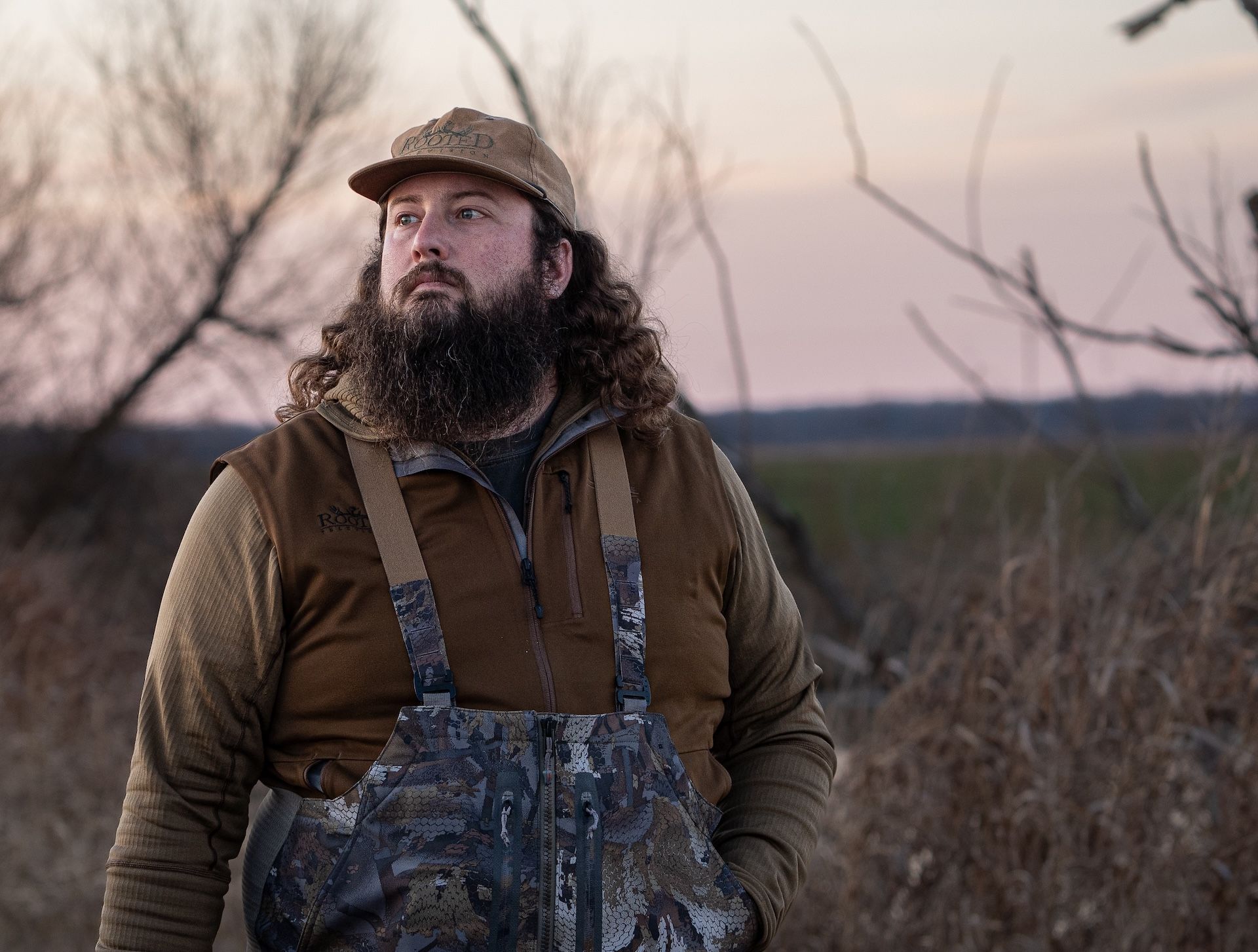
9. Get a Good Set of Waders
Every set of waders will leak at some point, but with a good set, you can get at least two seasons out of them. No matter if they are cheap or expensive, they will eventually leak.
However, my Sitka waders have made it through two seasons (going on three) and have yet to leak. They were expensive but worth it to avoid buying three pairs of waders in the same timeframe.
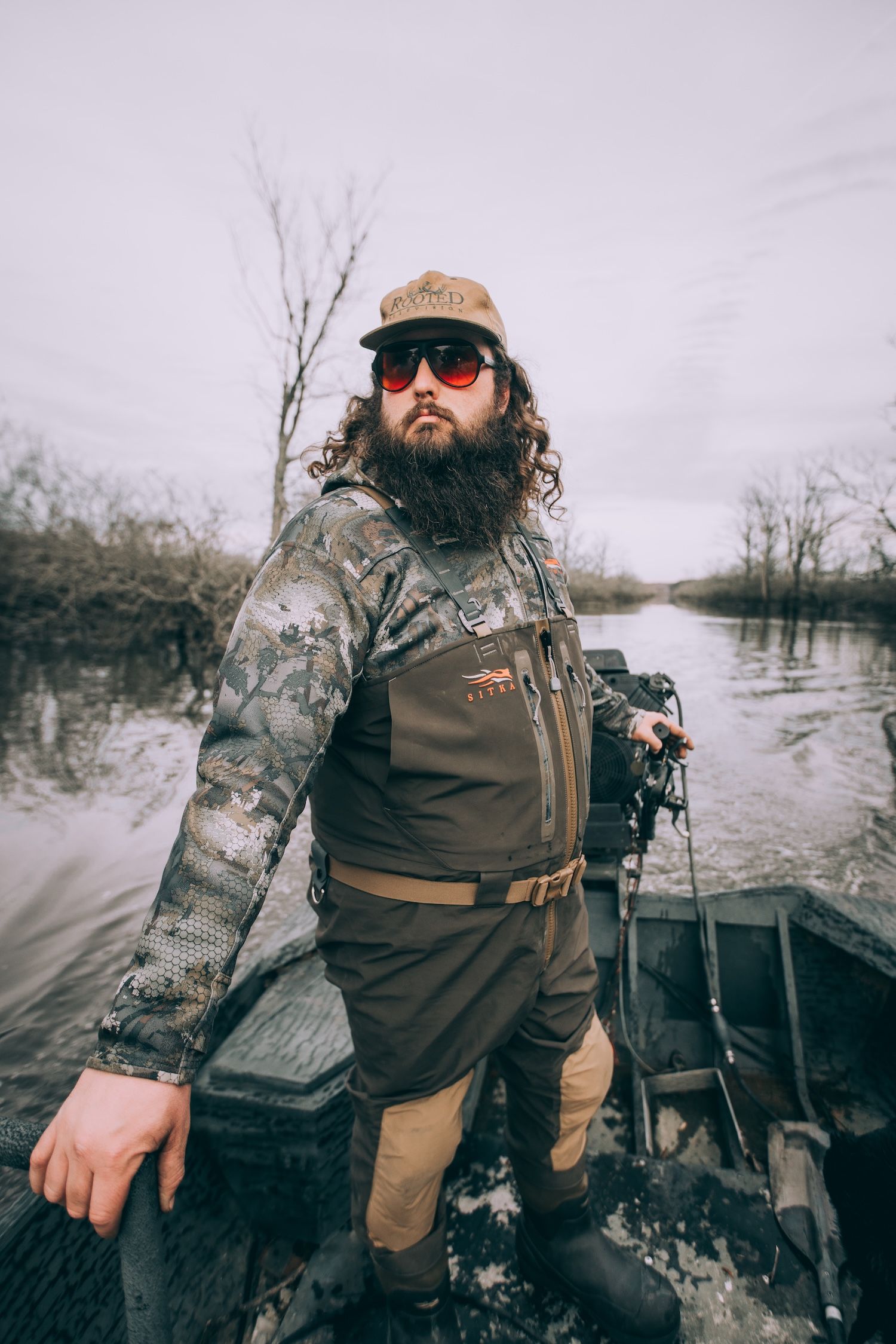
Brand doesn’t matter. Build quality matters. Fit into waders and boots that are the most comfortable for you. Be sure to try them on before you buy them. Don’t just buy them online, or you risk being miserable for an entire season.
Make sure you can move. Breathable waders are a game changer. They are easier to move in than neoprene, and they pack small. They're not as warm as neoprene, but you can layer.
10. Dress in Layers
Many waterfowl hunts take place in cold, wet weather. Dressing in layers is the best way to stay warm and dry, and cool down later if the day heats up.
Start with a base layer, like merino wool. It's the absolute warmest base layer you can get, no matter the brand. Then, depending on how cold-natured you are, wear insulated wader pants.
Or, if you need more warmth, wear a pair of sweatpants over your wool pants, then put on your wader pants. The layer of sweatpants creates an additional barrier layer between the cold water you're standing in and your hide.
Pack more than you need and be prepared for changes that happen fast. Prepare for the worst and hope for the best.
For your upper body, do the same thing. Start your layering with the merino wool, add a hoodie, then wear your vest over all of that.
Budget Wisely
Remember, when buying gear and clothing, you get what you pay for. Spend what you need on the proper, higher-quality gear, but stay within budget. If you’re cold, you’ll be miserable.
Spend your money on what’s going to stop the wind. Wind is the number one thing that makes you cold. Then, focus on insulation for your layering. In my experience, Gore-Tex jackets are legit waterproof — the brand doesn't matter.
When you're warm and comfortable, you shoot the best and can stay out the longest.
Ben's Pro Tip: If it’s raining, don’t tuck your rain jacket into waders. That lets the rain run right down your jacket. That's no good. Put the rain jacket on the outside of your waders.

11. Learn and Use Duck Calls
I'm biased. I've had the same call since the 90s. It's the one my dad gave me — an old original RNT Daisy Cutter Call. One of the first ones they made. I've used that call to kill thousands of ducks over the years (25 years), and I have never tuned it. Not one time.
Now it has turned into an heirloom. It came from my dad to me. But whenever my son kills his first duck, I'm not going to give him the call because it means a lot to me. But I'm going to put it in the mount in the glass case, so that way he always has something from me that I used for years and years.
I don't want him to get it when he's a teenager and lose the lanyard with the call on it.
Categories of Duck Calls
Duck calls are broken down into different categories:
- Timber calls: These are essentially cut-down calls.
- Field calls (J-Frame): These are double reeds, some have triple reeds, and there are single reeds.
Choose a call that fits you the best. So ask, "What is my skill level?" and "What do I want to achieve?"
Do I want to sound like an old raspy hen, or do I want to get their attention at a further distance? That's why I keep a double reed and a
double and single reed. I like the versatility of switching between calls to finish the ducks.
Use the Right Duck Calling Techniques
Stay within a 4-5 note cadence. A mallard sitting on the water will typically do a 4-5 note cadence. You have to understand how ducks are communicating. You want to sound like a duck on the water (not like a duck in the air).
Do short feed calls mixed in with the quacks. You want to sound like a bunch of different ducks in the same area. That's why it's nice having the single and the double reed, so I can switch between the two and sound like two different types of ducks in the same spot.
Plus, when you're in the blind with someone else who can call, you can coordinate with them. For instance, they could do a feeder call while you do a quack cadence, then switch back and forth. Now you sound like different ducks at different pitches, so you're giving them a realistic look, sound, and feel.
This makes them want to land (oh, there’s food here)!
The Comeback Call
Then there's the comeback situation. Some hunters use a double reed, but I like to use my single reed because if the ducks go out and bank hard, I can use the single reed to get loud if I need to yell at them to turn and come back.
Remember that you're working with wild animals. Sometimes they do what you want when you call, sometimes they don't. You can't have the expectation that every group of ducks you work is going to come in, because they're just not. It's all up to them.
Call Woods
There are several different woods you can choose from for duck calls.
My favorite is the Cocobolo wood because of how dense it is, and I love the tone that comes out of it. I also like calls made out of Hedge wood because they're also very dense, and I like the tone.
Acrylic calls are good because they can get very loud in open water situations like a massive rice field. You can reach a duck that's out a bit further if you need to.
Remember: Every call has its place, but don't call too much. Just let the ducks do their thing and let them finish.

HuntWise Changes the Game
Before (without HuntWise), you had your mind and a piece of paper. Now, with HuntWise, it's all digital, and you don’t have to carry a notebook.
HuntWise changed the game for me by knowing the wind before I get there. It's helped me be better-suited for making an in-depth plan.
WindCast is pretty dang close every single time. It's up-to-date and real-time, so you know exactly where the wind is going all the time.
I use it for scouting and dropping pins (where ducks are feeding, resting, and loafing). It helps you triangulate flight patterns so you know exactly where birds are. It makes everything more streamlined.
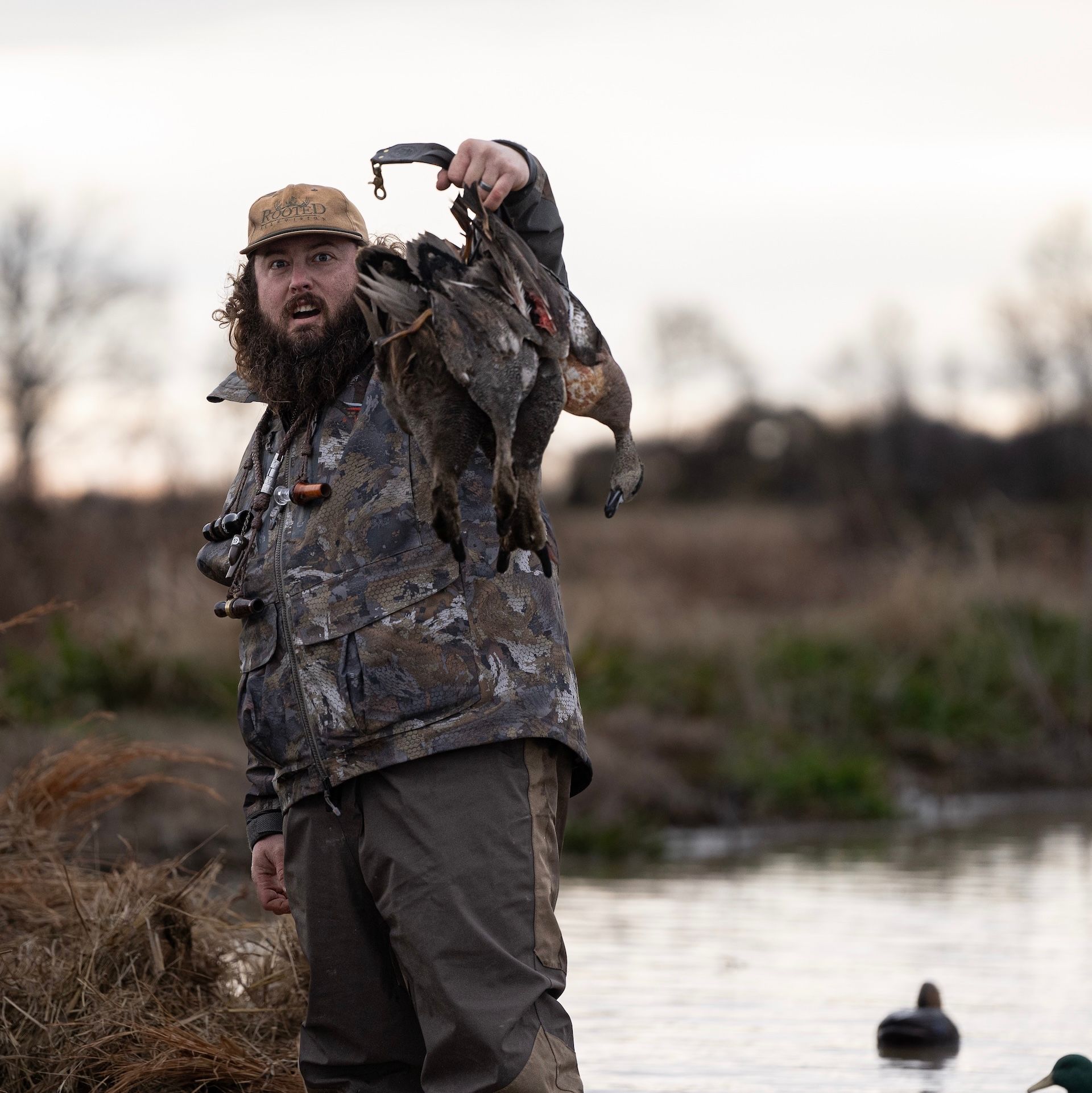
Use HuntWise and Ben's Duck Hunting Tips for Better Hunts
At the end of the day, it's all about having fun and being with your brothers in the woods, and enjoying God’s creation. Don't worry about how expensive things are. Read all you can, start with what you can, and just get out there and learn. Learning how to hunt waterfowl is a lot of trial and error.
Shoot straight. Always lead the bird. And don't stop after you pull the trigger. Follow through after the shot.
I've had some of the absolute best friendships forged in the ice and snow of a duck blind. They are lifelong brothers. We forged the friendships in some of the harshest environments around, and that's the friendship that's going to last. That’s the point.
There's nothing better than watching the sunrise and God’s creation come to life. When the songbirds start, the ducks are about to be up. Every duck is a beautiful creation. It's just a beautiful thing.
To put Ben's tips to good use this season, download HuntWise and start planning your waterfowl hunts!
We'll give you your first week in the app free.
More Content Like This
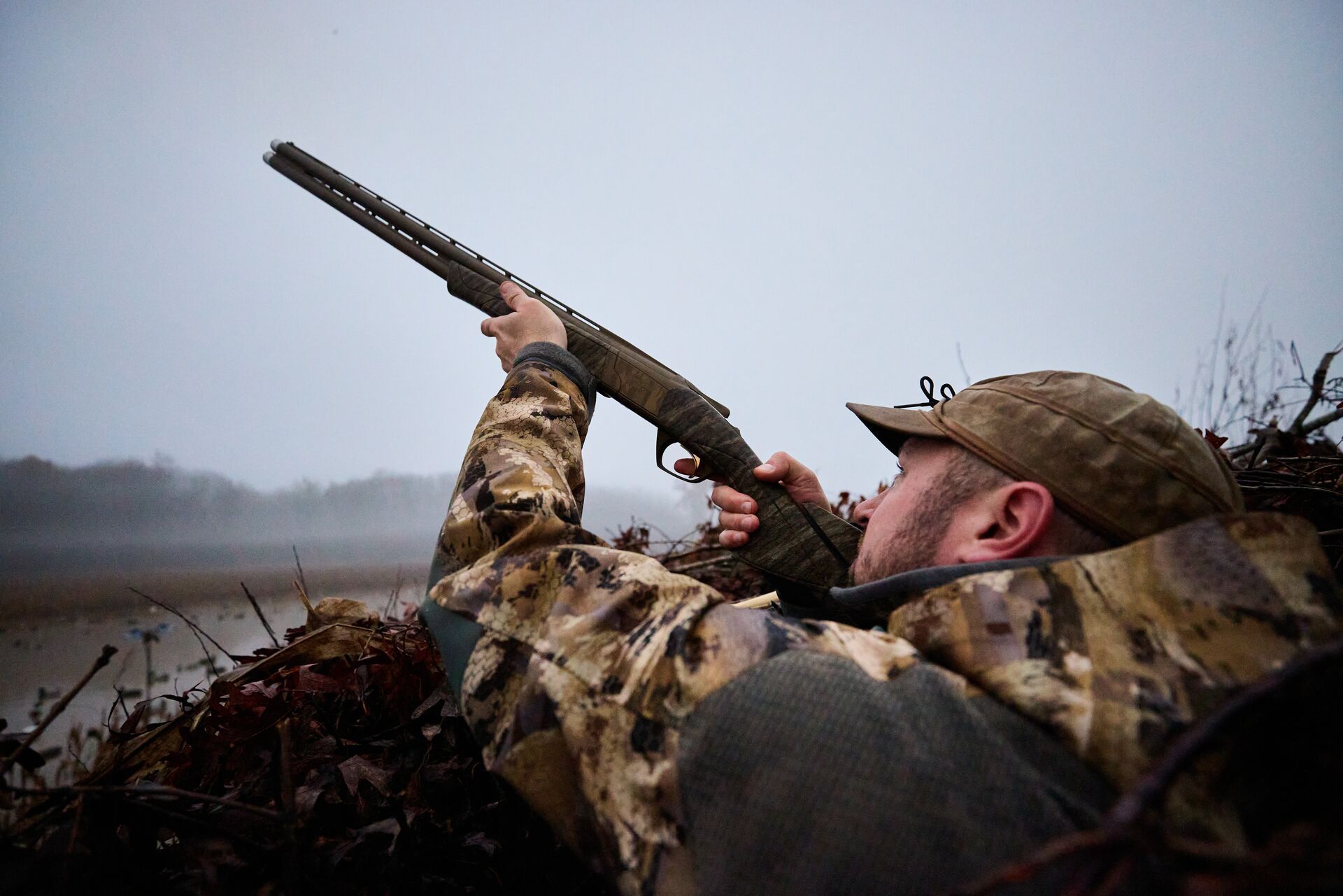
When Is the MN Duck Opener 2025?
The Minnesota duck opener and waterfowl season will be here before you know it. With premium hunting locations (it's not called the Land of 10,000 Lakes for nothing) and a strong hunting tradition, geese and duck hunting are a bread-and-butter hunt f...Read More
Read MoreA Guide to the Top Decoy Spreads For Goose Hunting This Season
With whitetail season in the rearview mirror, hunters are focused on taking down Canada geese. To properly hunt these migratory birds, a hunter must have a solid understanding of the tools of the trade, the most important of which are decoys and spre...Read More
Read More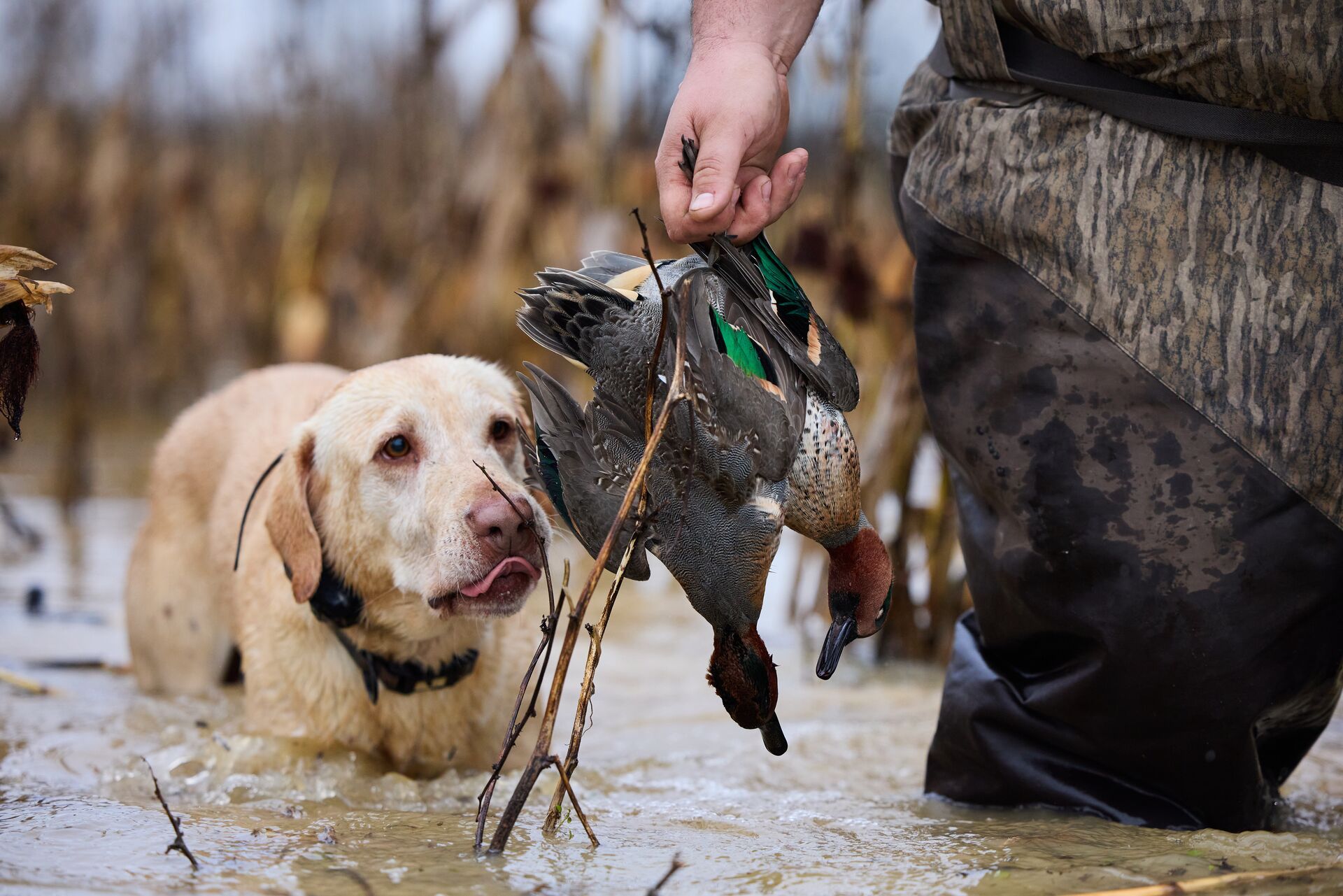
The Best Duck Hunting States for Waterfowling Adventures
While the abundance of waterfowl and distinct migratory flyways means excellent waterfowl hunting opportunities in almost every state, from the Arctic zones to the Florida Panhandle, some stand out as premier destinations for exceptional duck hunting...Read More
Read More Waterfowl
WaterfowlWhen Is the MN Duck Opener 2025?
By Teri Williams | 08/26/2025The Minnesota duck opener and waterfowl season will be here before you know it. With premium hunting locations (it's not called the Land of 10,000 Lakes for nothing) and a strong hunting tradition, geese and duck hunting are a bread-and-butter hunt f...Read More
Read More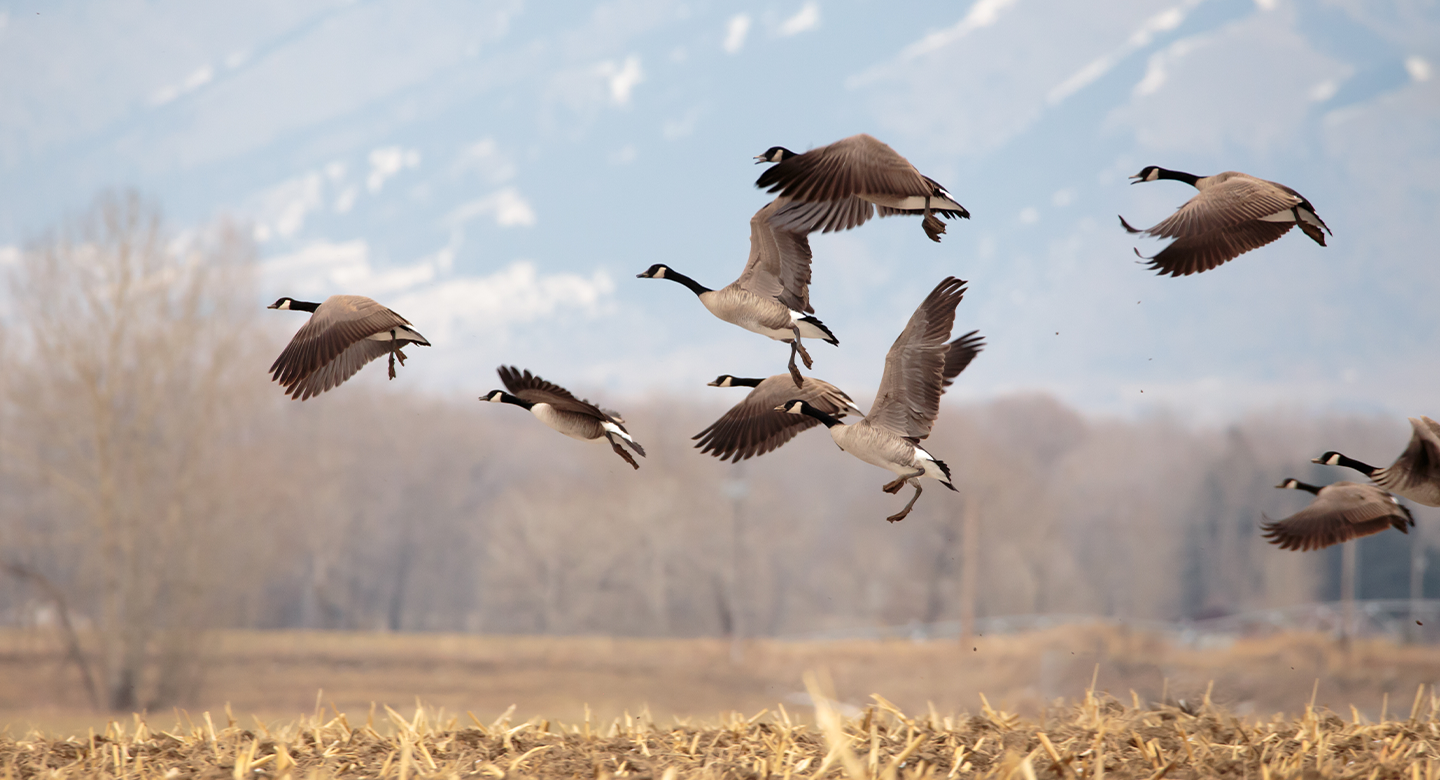 Waterfowl
WaterfowlA Guide to the Top Decoy Spreads For Goose Hunting This Season
By Lexi Quinn | 08/24/2023With whitetail season in the rearview mirror, hunters are focused on taking down Canada geese. To properly hunt these migratory birds, a hunter must have a solid understanding of the tools of the trade, the most important of which are decoys and spre...Read More
Read More Waterfowl
WaterfowlThe Best Duck Hunting States for Waterfowling Adventures
By Quinn Badder | 03/13/2025While the abundance of waterfowl and distinct migratory flyways means excellent waterfowl hunting opportunities in almost every state, from the Arctic zones to the Florida Panhandle, some stand out as premier destinations for exceptional duck hunting...Read More
Read More
1 of 3
